Abstract
Содержание
- Introduction
- 1. Theme urgency
- 2. Goal and tasks of the research
- 3. Technology of preparation of sugar syrup
- 4. Measuring the quality parameters of sugar syrup
- 4.1 Measuring the concentration of sugar syrup
- 4.2 Measuring viscosity of the syrup
- Conclusion
- References
Introduction
Caramel is one of the best produced production among the various kinds of confectionery. To release products of high quality at minimal cost of raw materials and energy is necessary during the entire process making caramel syrup (boiling syrup) to make regular technical-chemical control. The main controlled parameters are per cent of sugar content (sugar concentration) in syrup, the temperature of syrup, time of processing, the viscosity of the syrup in a slightly chilled [2].
1. Theme urgency
Now the production of confectionery products is one of the most developed sectors of the food industry in Ukraine. Total production is about 3% of GDP. Currently there are 26 confectionery factories. More than 65% of the market is divided among the five companies, main ("Conti", "AVC") of which are located in our region. Manufacturing companies are actively exporting products to 44 countries (about 40% of output productions) [8]. The initial product for caramel is sugar syrup, which is dedicated to quality control of master work.
2. Goal and tasks of the research
Goal - to develop, justify and explore the structure of the electronic system for measuring quality parameters of sugar syrup (temperature, density, viscosity) in the production of caramel.
Main tasks of the research:
- Analysis methods of measuring the concentration of solids in solutions of sucrose confectionary production.
- Development of a mathematical model for measuring the concentration of sugar syrup.
- Rationale for the structure of the channel measuring the concentration of sugar syrup.
- Analysis methods for measuring the viscosity of sugar syrup.
- Rationale for measuring the viscosity of the structure of sugar syrup.
- Designing the structure of the electron system of measurement of quality parameters of sugar syrup.
Research object: sugar syrup in the production of caramel.
Research subject: control of quality parameters (concentration, temperature, viscosity) of sugar syrup.
3. Technology of preparation of sugar syrup
Syrup is concentrate (more than 40%) solution of various sugars (sucrose, glucose, maltose, fructose, etc.) or a mixture thereof in water. Syrup is a clear viscous, almost colorless liquid. Depending on the dissolved sugar syrup called: sugar (sucrose), invert (a mixture of equal amounts of glucose and fructose), mixed (sucrose and molasses), etc.
The process of making the syrup consists of 2 steps: dissolution of the sugar and boiling the resulting syrup to the desired concentration [2].
The cooking process is carried out in caramel syrup siropovarochnyh stations. Technological scheme of such a station is shown in Fig. 1.

Figure 1 – Animation of the cooking syrup. The animation parameters: an amount of frames – 8; size – 150 КВ; amount of repetition – 6
4. Measuring the quality parameters of sugar syrup
Molasses and invert syrup used in the production of caramel due to their anticrystallization properties. It is impossible to make caramel without anticrystallization. During boiling of sugar solution concentration is constantly increased and reached saturation, i.e. the point where further increase in concentration leads to a glut and release of sugar in the form of crystals [7].
The viscosity of the initial product of caramel – syrup, is very important in the production of caramel. High viscosity contributes to the caramel mass in the amorphous state, since the higher the viscosity, the less it is susceptible to crystallization. The viscosity of the syrup depends on the temperature, mass fraction of solids and recipes – the ratio of molasses and sugar [1].
Thus, in the process of caramel syrup is necessary to constantly monitor the temperature of the solution boils down, the percentage of sugar syrup (moisture content or concentration) and viscosity.
3.1 Measuring the concentration of sugar syrup
The concentration of sugar in the syrup can be measured by several methods. For example, refractometry. Refraction or refraction of light called the change in the direction of the beam upon passing through the interface between two transparent media I and II (Fig. 2). Angle of 90°-α, formed by the direction of the incident rayand the normal is called the angle of incidence, the angle β, formed by the directionof the refracted ray and the continuation of the normal - the angle of refraction. The incident and refracted rays lie in one plane.
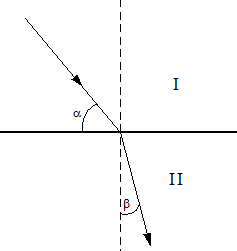
Figure 2 - The refraction of the light beam at the interface of two media
The ability of various substances to refract the light beam is characterized by there fractive index. The refractive index is due to the nature of the substance, its chemical structure. The refractive index of solutions depends on their concentration. This property is commonly used to control production. According to the index of refraction, such as sugar water or alcohol solutions is easy to determine their concentration or the refractive index of fat in a special solvent determine the fat content in confectionery production facilities.
For measuring the refractive index using special devices, which are called refractometers. In the confectionery industry to control the concentration of sugar in syrup used brand refractometers RPL-3 (Food Lab), URL (Universal Laboratory) and RPL-2 (Precision Laboratory) [2].
However, measuring the concentration of sugar solution using the refractometric method is not suitable for creating an automatic system for measuring and monitoring the production process.
Another method of measurement is polyarometriya. This is the method of physicochemical analysis, based on the measurement of the polarization planerotation of optically active substances. In the laboratories of confectioneries this method determines the content of sucrose, molasses, reducing substances, the ratio of the components of confectionery products, sorbitol content, etc.
Polarimetric methods are especially widely used for the determination of sucrose. Devices that are used for such determinations, called Brix meters. The laboratories used confectioneries sugarmeter SU-3. However, it is not suitable for measurements in the workshop.
It is known [1] that the concentration of sugar syrup (sugar in the solution) can be determined indirectly by measuring the temperature of the solution and its density. In [3] it is shown that the most suitable method for measuring the density of the syrup in a real-time is application of hydrostatic method. The principle of measuring the density of this method is based on the relationship between fluid density ρ and the hydrostatic pressure P at a certain depth h, measured from the liquid surface:
where g – acceleration due to gravity.
The hydrostatic pressure of the liquid column at the constant height is a measure of the density of liquid (solution). The pressure of the liquid column can be measured using differential pressure transducer.
In Fig. 3 shows the hydrostatic densimeter [4], in which the current value of the density of caramel syrup is determined by the pressure difference and by measuring the differential pressure transducer is converted into a proportional electrical signal. The syrup is in a container, which is supported by roughly a constant level (which is basically not necessary). The gas (air delivered from the compressor) with a slight positive pressure supplied to the tube 2 and 3densitometer, bubbles through the syrup and goes into the atmosphere. Simultaneously, the gas pressure in the tube 2 (and 3) equal to the pressure of the column syrup height h1 (and h2), is input to the transmitter differential pressure 4.Thus, with two tubes of different lengths, placed in the syrup, and the differential pressure transducer (ИПРД) by measuring the differential pressure P, due to the difference between the levels h=h1-h2. The current values of the differential pressure P(t) and the density of the syrup ρ(t) have relation:
(where k = h*g = const).
The output signal from DPT proportional to the current value of the difference P(t) is converted into a special device in the current value of the density of the syrup. By the current density ρ and temperature T is calculated concentration of sugar C (t) in syrup.
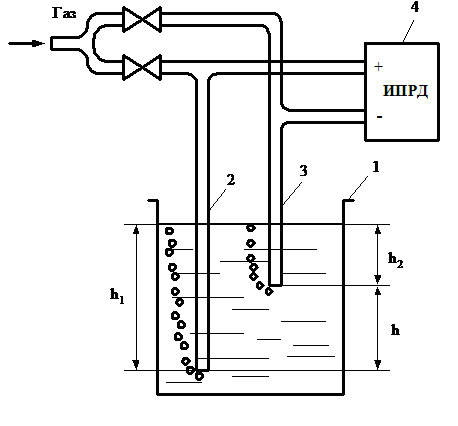
Figure 3 — Diagram of hydrostatic densimeter
Thus, the method of measuring concentration of sugar in syrup based on the density and temperature using hydrostatic densimeter allows measurement of current density and concentration of the syrup in real time, which is very important for ongoing technical-chemical process control and automation.
For measuring the ambient temperature less than 1500 ºC are widely used resistance thermometers, based on the dependence of the electrical resistance of sensor from temperature. Resistance thermometers (RT) is used as a model and working measuring instruments of temperature.
An important characteristic of material of the sensor (RT) is the temperature coefficient of resistance

As a working measuring instruments of temperature in industrial applications is often used copper TC (from -50ºC to +180ºC). The copper heating elements have a linear dependence of R(T), high coefficient α, a good reproducibility of the characteristics, the weak dependence of resistance on pressure. A generalized block diagram of an electronic device measuring the concentration shown in Fig. 4.
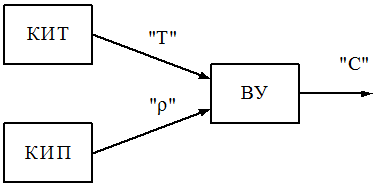
Figure 4 – Block diagram of the device measuring the concentration of
КИТ – the channel temperature measurement
КИП – channel density measurement
ВУ – computing device
3.2 Measuring the viscosity of the syrup
Viscosity – the property of fluids to resist displacement or shift them to one side relative to the other. Viscosity gives the best representation of the liquid to change its status and can be considered one of the main characteristics. A large dependence of the viscosity of fluids from their composition, structure, molecular structure allows to control the processes of many industries.
The higher viscosity of the syrup, the less susceptible caramel crystallization during cooling. High viscosity contributes to the caramel mass in the amorphous state [1]. It is therefore advisable to control this parameter to obtain a high quality product.
With a large variety of existing methods for measuring the viscosity of the syrup is most suitable method for measuring the rotary. Its benefits include: a relatively simple structure, embodying a method suitable for use in a wide range of temperatures and pressures, as well as the ability to automate the process. Viscometers, which are based on this method allows to measure the range to 103 Pa⋅s.
The essence of the rotary method consists in the fact that the investigated liquid is placed in the gap between the two surfaces of regular geometric shape. One of the surfaces is rotated at a constant rate. In this rotational movement is transmitted to the other surface of the liquid. According to the theory of the method assumes the absence of slip at the liquid surface. Torque is transmitted from one surface to another, is a measure of the viscosity of the fluid [2].
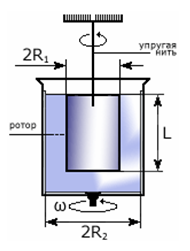
Figure 5 – Diagram of rotational viscometer
Currently, the most common electro-rotational viscometers: a cylinder immersed in a viscous medium is driven by an electric motor. Rotating at a constant speed rotor viscometer when immersed in a liquid or melt is resisted by a uniform rotational motion on the shaft of the motor braking torque arises directly proportional to the viscosity of the medium, which causes a corresponding change in the characteristics of the engine.
In electro-rotational viscometers usually use a constant speed, but at the time of this measurement is directly proportional to viscosity, which can vary by several tens of times:
where K – the coefficient for the different types is calculated once and remains unchanged,
ω – angular speed of rotation of the rotor.
Changing the torque may cause unstable operation of the electric motor, which would entail a violation of the laminar flow and will increase the shear stress. Therefore, to maintain a constant torque is necessary to change the speed of change in viscosity. Thus, at high viscosities the rate should decrease, and at low viscosities- to rise. This will reduce errors and increase the measurement range.
As the sensor can use the asynchronous АД executive micromotor with tachogenerator ТГН. Engine through the gear rotates the rotor in РЕД liquid. Control of rotor speed by using tachogenerator, signal from tachogenerator is fed to the АЦП and goes to the controller K. The change in speed by using a frequency converter ЧП and a voltage converter ПН.
Block diagram of the channel viscosity measurements shown in Fig. 6.
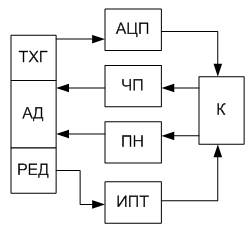
Figure 6 — Block diagram of the channel measuring the viscosity
Conclusion
- The urgency of the problem and the choice of parameters that should be monitored during the production of sugar syrup are grounded.
- The analysis of existing methods and control devices quality parameters of sugar syrup is performed.
- For each monitored parameter is selected and validated method of measurement.
- Block diagrams of measuring channels controlled parameters are developed.
This master's work is not completed yet. Final completion: December 2012.
References
- Лурье И.С. Руководство по технологическому контролю в кондитерском производстве. – М.: Пищевая промышленность. – 1978. – 278 с.
- Антопольская М.Я., Бронштейн И.Н. Справочник по сырью, полуфабрикатам и готовым изделиям кондитерского производства. – М.: Пищевая промышленность, 1964.
- Зори А.А., Коренев В.Д., Кузнецова О.Н. Контрольно-измерительная система параметров кондитерского производства // Труды 1-ой научно-практической конференции «Совре-менная контрольно-испытательная техника промышленных изделий и их сертификация». СКИТ-97. – Мукачево, 1997. – С.82–85.
- Кузнецова О.Н., Коренев В.Д., Зори А.А. Автоматизированная система контроля параметров сахарных растворов кондитерского производства // Наукові праці Донецького державного технічного університету. Серія: Обчислювальна техніка та автоматизація, випуск 3. – Донецьк: Донату, 1999. – С.370–375.
- Степанова И.В., Тарасов А.В. Вязкость жидких сред: учебное пособие. - СПб.: Петербургский государственный университет путей сообщения – 2006. – 37 с.
- Кузнецов О.А. Реология пищевых масс: Учебное пособие. / Волошин Е.В., Сагитов Р.Ф. – Оренбург: ГОУ ОГУ, 2005. - 106 с.
- Зубченко А.В. Технология кондитерского производства. – Воронеж: ВГТА, 1999. – 440 с.
- ibcontacts [Электронный ресурс]: – Электронные данные. – Режим доступа: http://ibcontacts.com.ua/ru/perspectivy_food_in_ukrane/ - Дата доступа: апрель 2012. – Загл. с экрана.
- Загузов И.С., Поляков К.А. Математическое моделирование течений вязкой жидкости вблизи твердых поверхностей. Самара: Изд-во Самарского университета, 1999. – 92 с.
- Брюханов В.А. Методы повышения точности в промышленности – М.: Изд-во стандартов, 1991. – 108 с.
On top 
